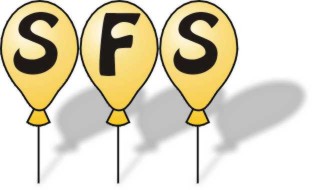

What Every Driver Should Know
What Every Driver Should Know
An unofficial supplement to What Every Driver Must Know
Freeways
- Use your turn signal when changing lanes but only just before you start steering over. If you signal too far ahead of time, that will instruct the car behind you in the other lane to speed up so as not to let you into the lane.
- Use your mirrors, but also look over your shoulder before changing lanes. Even if you know no one is there. Get in the habit and always do it.
- Anticipate what the guy in front of you is going to do by also watching the brake lights of the guy in front of him.
- If you can't see the brake lights of the guy in front of the guy in front of you, then give yourself a little more distance between you and the guy in front of you.
Intersections
- If you pull out in front of someone, accelerate quickly. If you can't accelerate quickly, then wait.
- If you are thinking about pulling onto a rural road, but there is a line of cars coming, go for it if you think you can make it. Because a line of cars means the first car is slow - if you wait and go after it, you'll just be one of the other cars that is stuck in a line behind Mr. Slowpoke. Plus, since he's slow, you'll have a better chance of being able to turn onto the road and accelerate before he gets to you.
- Don't block the intersection. In other words, leave room for someone to leave that driveway. I know there's not a car there right now, but your light is long and someone might need to use the driveway while you're still stopped.
- Slow down in the left-turn lane, if you are going to turn left. The left-turn lane exists so that left-turners don't impede traffic. If you slow down in the travel lane before getting into the left-turn lane, you are impeding traffic. Help everyone out - merge, then brake.
- Use your turn signal, especially at intersections. It's free, and it will help everyone else out immensely.
- Double-up at 4-way stops if you can. And usually you can. If your turn is not the current one but the next one, but your path isn't going to be in the way of the guy whose turn it is, then just go at the same time he does. This is where turn signals are important.
Maintenance
- Check your oil occasionally. An easy way to remember is to do it while your standing at the gas pump, wondering what to do while waiting for your car to fill. If you're not going to pay attention to your oil, then obey the oil change sticker the shop put on your windshield. If you don't have that sticker and you don't know when your oil was last changed, go get it changed now.
- Keep a gas can in your trunk, unless you drive an all-electric car, in which case you're out of luck.
- Keep a tire inflator in your trunk (the 12V plug-in-to-the-car type, not the aerosol type). It's about $20 for the kind with the built-in pressure gauge, so you don't have to keep stopping to check.
- Keep replacement wipers in your trunk. I had one come off while driving. Because I had one in the car, I was able to replace it right away, without having to change my route to go past a parts store and hope they were still open.
- Keep spare bulbs in your glove box or center console - somewhere safe. Not just headlight bulbs, but the other ones too - side signal, back signal, brake lamps. They are usually easy to replace by yourself.
- If you haven't replaced your battery in the last 5 years, be prepared for it to go. In other words, have jumper cables available. If you think your battery is run down (i.e. your car sounds slow while starting) and the battery is over 5 years old, go get it replaced before it completely dies. Prevent stranding yourself.
Manual Transmission
- If you are panicking and don't know what to do, press in the clutch pedal. All the way. And keep your foot off the gas. Now take a breath and figure out what it is you want to do. If you still don't know, pull to a safe spot off the road, stop, and let someone else drive.
- Rule of thumb: 2nd gear around corners
Repairs
- If your car dies while it's running, you do not need a jump start. Jump starts are useful only when your car won't start in the first place. If it started, then died, you have a problem that can't be fixed with a jump. Possible causes are fuel pump, alternator, ignition system (coil packs), or catastrophic engine failure (moving parts broke).

